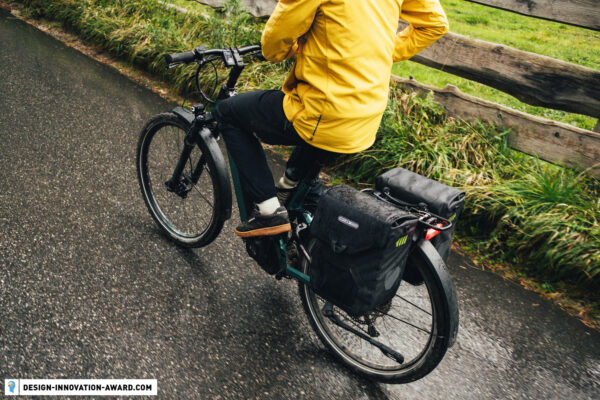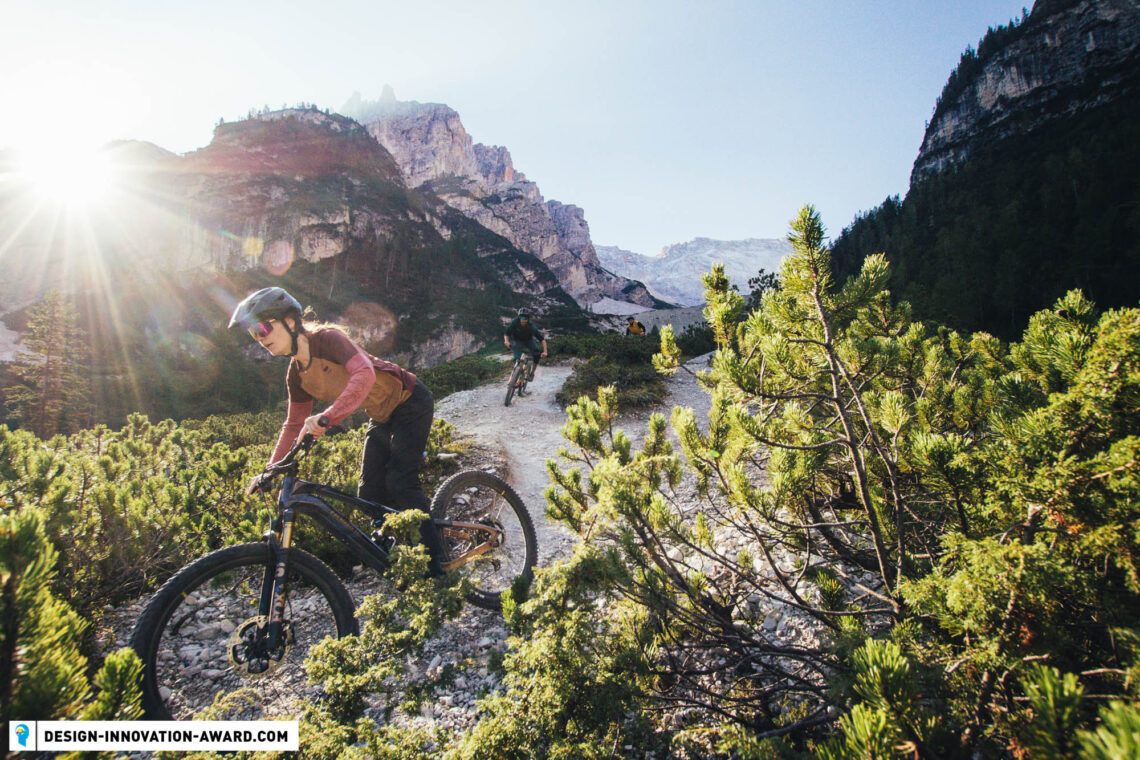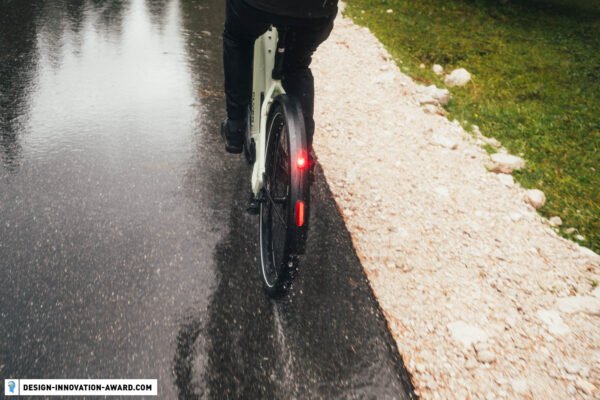Until recently, the parameters for new development in the bike industry were relatively simple: faster, lighter, stiffer, better, more fascinating. However, this ultimate performance development not only comes at a high price but also collides more and more with other values and changing market needs.

In the name of increasing performance, the bike industry excels at bringing to life innovations and solutions to problems that didn’t even exist before. While everything used to be enduro-specific, now it’s gravel-specific and marketed particularly colourful or in a sustainable-looking earth-friendly tone. That’s fine, as long as we don’t lose sight of the real problems and challenges, and it’s exactly what the new times bring.


The bike boom of the past three years has ushered in a new era in the bike world. While a few years ago the bike scene was relatively homogeneous with clearly defined target groups, today, it is a melting pot of people with a wide variety of demands and needs. Many of those for whom biking has been a fitness and outdoor experience and an escape from humdrum routine in recent years want this freedom to continue in their daily lives. The majority of riders seek relaxation in biking instead of the constant ticking of the stopwatch. It’s not the last ounce of performance they are looking for but a safe exploration of nature on two wheels. In short: They want an experience instead of a result! This creates numerous new problems that need to be tackled, and only those who solve real problems will be in position to advance the bike scene. In a nutshell: Going longer, flatter and lower is not the solution in this case!

Opening doors instead of building walls – Fewer hurdles, more fun!
Stories of countless broken bones, more buttons and levers on bikes than in aeroplane cockpits, and a current generation of bikes that is more race-oriented than ever before – what do all these points have in common? They don’t exactly make it easy for beginners to get a foothold in biking. It’s no great surprise that mountain biking is not exactly perceived as the world’s safest sport, but with a growing group of riders whose main concern is a safe experience, the issue of riding safety is massively gaining importance. eMTBs have already brought fitness, range and adventure to loads of people, now it’s time to give them a safe experience too. Just like with driving a car, not only race drivers are allowed to participate in everyday traffic, but everyone has the right to mobility. The Bosch eBike ABS system, which won the Design & Innovation Award 2023 (DI.A 2023), is an absolute milestone in this context. What has become indispensable in cars has now also made it to the trails and forest paths. A problem that is especially prevalent in mountainous regions during the summer is that riders tackle even the steepest trails, making it far into the mountains on their eMTBs, until the sudden realisation of having to somehow get back down to the valley ends in sheer panic attacks for some.

Hoteliers and mountain hut keepers can tell stories by the dozen: guests calling from the mountain top in panic, serious crashes, and even mountain rescue operations. The Bosch eBike ABS contributes to solving this problem and through controlled braking – even on gravel – allows a safe way down into the valley for everyone, promising to decrease the number of rescue missions. On the trail the ABS also protects beginners from going over the bars when instinctively braking in a panic.



It will be exciting to see whether other driving assistance systems from cars will make it onto mountain bikes in the future. There are still enough problems that need to be solved, such as starting off on steep terrain or jerky steering movements that lead to oversteering, for example. Canyon has developed the K.I.S system, a steering stabiliser that dampens the steering movements and stabilises the handling. The actual effect is debatable, but the development is clearly going in one direction: Safety!
What may sound banal to more advanced riders can pose a serious problem and safety risk for a surprisingly high number of people: Mounting and dismounting. Full-suspension off-road step-through bikes like the ZEMO SU-E FS 11 literally lower the barrier of entry here and offer more safety when stopping and dismounting, allowing a new age group to take their first steps off-road. Regardless of age, people with a wide variety of physical conditions, such as handicaps or limited mobility, benefit from the easier handling of the off-road step-through bikes.


There is still a lot of potential to make starting out in the sport more accessible, not only when it comes to riding safety. Many newbies, but also advanced riders, are simply overwhelmed by some of the current, modern bikes. The problem is partly the handling but also the sheer endless technical possibilities. For years, mountain bikes have become longer, flatter, lower, and therefore more race-oriented – it is no secret that a tipping point will soon be reached. While skilled riders and professionals burn new personal bests into the forest with these racing machines, a large proportion of riders are simply out of their depth. Even though it’s very tempting to use the same equipment as the pros, most people don’t do themselves any favours by doing so. If we divide bikes into the professional segment, the sports segment and the everyday segment, as the automotive industry does with cars, most of the current bikes would be assigned to the professional segment. What is really needed are more easygoing bikes in the sports segment with moderate, fun geometries and forgiving kinematics that make it easy to get started on the trails and don’t require athletic feats for the simplest riding manoeuvres.

In addition to the riding characteristics of current bikes, the countless technical and configuration possibilities can also make life difficult. Many riders get confused in the flood of setting options and instead of optimising the riding characteristics, they make them worse through incorrect adjustments. It is time to combine technical products with the proper education to turn newbies into experts. Anyone can learn it. ?When playfully and intuitively presented, it can even be fun to get to grips with the new technical solutions. One example is the AIRsistant tire pressure monitoring system, also awarded with the DI.A 2023, which calculates the user-specific air pressure in just a few steps and then indicates whenever the tires are under- or overinflated. Not only does this increase performance on the trail, but it also protects people and equipment. On the frame, too, things are changing and simple air pressure tables on the fork have long since ceased to be the only aid. Products like the Quarq ShockWiz, which gives you a setup recommendation based on sensors attached to the frame, are cool gadgets that make a complex topic fun and understandable – more of those, please!


Even if there are still some issues for many riders, it is a fact that, especially due to the many cool new products, never before have so many people had the opportunity to explore nature together on knobby tires and we think that this calls for celebration!
Peace of mind instead of performance overkill
Many riders know the problem, you go for a drink with your friends after the post-work ride and suddenly it’s night. Once again, you ride home in the dark without lights because it is inconvenient to take them with you and, of course, there are none on your MTB. But why is that actually? The integration of new functions into the performance MTB product would generate a whole new peace of mind, creating a diverse and holistic solution. For instance, cleverly integrated lights allow a (e)MTB to be used for carefree commuting regardless of the time of day. The performance product becomes versatile and usable in everyday life, covering all kinds of situations that previously required several bikes. Sitting together and enjoying an after-ride beer after nightfall would thus be much more relaxed.
Other safety features, such as immobilisers or integrated GPS trackers, which can already be found on various urban bikes, have their justification on mountain bikes too. Parking the bike in front of the ice cream parlour or taking a quick dip in the lake along the ride? So far, these have been the cause for a slight stomach ache and had you throw constant nervous glances over your shoulder – after all, your bike was probably wickedly expensive. Knowing that you can locate your bike at any time or that a thief first has to go to great lengths to bypass an immobiliser makes for a much more relaxed swim. The minimal additional weight of such systems, on the other hand, is easy to justify and the performance is not affected by them either.


Sustainability – Be a trendsetter!
Modern MTBs have always had to embody a variety of characteristics: Fun, fascination, adventure, style, performance and, increasingly important in recent years, sustainability and durability. Buzzwords such as resource-saving, recycled or climate-neutral are gaining hugely in importance in the bike industry. To stick with the story’s title about the future and problem-solving: This is about finding a solution to humanity’s most pressing problem at the moment. Again, this year, the DI.A attracted a large number of products that are committed to sustainability, recycling and low resource consumption. Products like the DI.A awarded Northwave Tailwhip Eco Evo shoe are on the right track: the upper material is made of 100% recycled PET bottles and the grippy Michelin sole is made of 26% recycled rubber, all of which can be traced through transparent certification. However, there are also negative examples where a product is presented as sustainable but the recycled or sustainable content of the product is miniscule or cannot be transparently verified, making it difficult to separate serious efforts and concepts from greenwashing, requiring very close inspection. Nor should we allow ourselves to be fooled by the industry with all their attempts because no matter how you spin it: The lack of consumption is always more sustainable than even the most sustainable consumption.

Although mountain biking takes place in nature, it is still by no means environmentally friendly. Longevity, long product cycles and high repairability are still utopian for most manufacturers’ products. MTBs are still pure fun products, which is okay because, after all, life can’t be completely rationalised. However, there are bike brands that lead the way: Privateer or RAAW, for example, rely on very durable, long-lasting aluminium frames that are still fun to ride after several seasons. The Polish manufacturer Antidote produces all its bikes in-house in Poland, from development to production, all made in one place, instead of around the world in 80 days. Even initiatives that seem small at first can be a valuable impulse or signal to the industry: For the new eMTB BOÖS, UNNO use about 200 g of recycled plastic, turning it into proprietary solutions, such as the display integrated in the top tube, or the chainstay protector. Initiatives like these can encourage the big players to take up and implement these impulses, thus reaching a significant amount of recycled material. The numerous cool, well-thought-out approaches show that sexy, fascinating and functional can well be combined with durable and resource-saving, all that is needed is incentives for alternative marketing and communication strategies. When will the first brand come along that, instead of a steering angle that has once again become half a degree flatter, presents the latest sustainable manufacturing method or durability and repairability as the strongest selling point? New trends can also be seen in the racing bike sector, which is even more trimmed to lightweight construction and performance: With the launch of the new Canyon Ultimate, the possible weight optimisations were explicitly not fully exploited in order to achieve more robustness – and thus more longevity – in case of possible crashes.

Caviar and Kashima – Will bikes become even more expensive?
Before looking to the future, you always have to turn your eyes to the past, and that was rather scary for riders on a budget. With the bike boom, bikes have become progressively more expensive in recent years, sometimes even within a few months. What is the reason for this? There are a number of factors. Besides the obvious ones, such as increased raw material prices, freight costs and limited supply, there are also a number of factors that only become apparent at second glance. Bikes have become much more technical, complex, customisable and simply better in recent years. In the meantime, complex products such as 12-speed drivetrains, some of them electronic, have become standard even on entry-level bikes. Find that hard to believe? Just as hard as trying to imagine riding without a dropper post. All of this, of course, combined with the most modern and complex rear triangle systems. The list could go on and on, and there’s no question that mountain bikes are better than ever as a result. However, many bikes, especially in the entry-level and sport segments, have such a level of performance now that most riders will never be able to max them out. Many riders pay for performance optimisation that is of no real use to them. Much like in the automotive sector, where most cars carry an almost infinite number of features and functions that only a fraction of users actually use. Nevertheless, these features have an impact on price and resource consumption. So, are simple, good bikes dying out? We hope not, as Specialized has shown with the Status model, for example, that even expensive premium manufacturers can bring a simple, reasonably-priced yet functional, and fun bike to the market. That’s the way to go!



As far as price development is concerned, there are signs of easing and a return to normality, which is desperately needed. Biking has always been a hobby with a very high financial entry threshold. For many people from less privileged social classes, however, this hurdle has become an insurmountable wall with the rising prices. This means that many newcomers – so important to this sport – never get to start on their bike journey. With the boom, the bike scene has become much more diverse in recent years, which is already enriching the sport, but the trend of diversity needs to continue and also include people with lower incomes or less financial means. Because it’s diversity and interaction that bring us all a step forward!
The diversity of bikes and people is making the riding experience possible in a whole new way, since today the market has the right bike for everyone. Regardless of other people’s opinions and beliefs, you should simply ride what suits your skills, fears and fitness. That’s exactly what we did. As a colourful bunch of different people and bikes, we had a brilliant tour from hut to hut, a lot of fun together and maybe one or two too many shots. Cheers to open minds and open trails!






So what is the future of mountain biking? Solving problems! In order to move forward, a new focus on the real needs of users is essential. Currently, the big trends are safety, sustainability, durability and accessibility. Performance is already abundant and it is sexy, but no longer at any price. More and more riders are becoming aware of this. Bikes are getting increasingly expensive and over-designed with performance features that only few riders will even begin to fully exploit.
That’s why it’s time to think mountain biking further, broader and more diversely in order to break new ground and finally eliminate long-standing shortcomings in the user experience.
Words: Felix Rauch Photos: Peter Walker, Robin Schmitt, Julian Lemme, Mike Hunger



